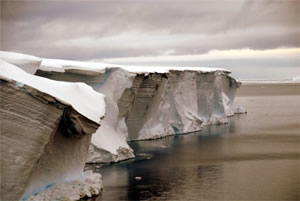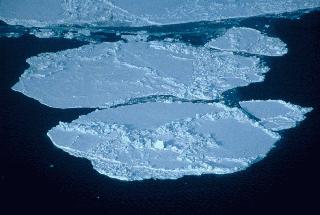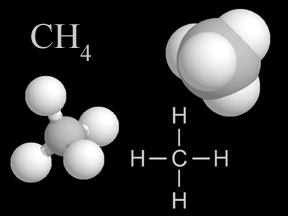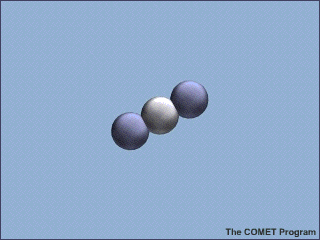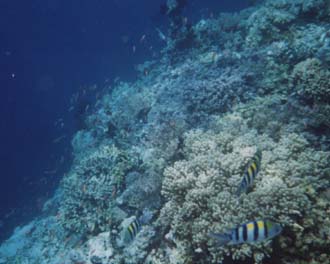Click on image for full size
Ute Kaden/PolarTREC
The Cryosphere and Global Climate Change
Changes in the cryosphere have a considerable impact on global climate. This is because the cryosphere is an important part of the Earth system and because it is so interconnected with other parts of the Earth system. Below are some of the ways that the cryosphere affects climate change through interactions with other parts of the Earth system and feedbacks that increase the rate of global warming.Melting Ice Causes More Warming: Ice-Albedo Feedback
The albedo of snow and ice is very high, so approximately 90% of incoming solar radiation is reflected. As the planet warms and more snow and ice melt, the darker-colored open water and land surface absorb more incoming solar radiation, and then release the heat to the atmosphere, causing more warming. According to a recent scientific study that used computer models to predict the future of Arctic sea ice, there may be no more sea ice left in the Arctic Ocean during summer within the next few decades. "As the ice retreats, the ocean transports more heat to the Arctic and the open water absorbs more sunlight, further accelerating the rate of warming and leading to the loss of more ice," explains Marika Holland, a scientist at the National Center for Atmospheric Research. "This is a positive feedback loop with dramatic implications for the entire Arctic region."
Melting Permafrost Releases Greenhouse Gas
As permafrost soil thaws due to global warming, carbon trapped within the soils is released as methane, a powerful greenhouse gas. The carbon became trapped when the soils froze during the beginning of the last ice age in the Pleistocene. The methane released to the atmosphere causes more global warming. Jeff Chanton, a Florida State University scientist who researched methane released from Siberian permafrost, explains that, "because the methane now emitted in our study region dates to the Pleistocene age, it's clear that the process, described by scientists as 'positive feedback to global warming,' has led to the release of old carbon stocks once stored in the permafrost."
Less Ice on Land Causes Sea Level Rise
Sea level has been rising about 1-2 millimeters each year as the Earth has become warmer, which has increased the rate of melting glaciers and ice sheets and expanded seawater with the added heat. If all the ice on land including the large glaciers and ice sheets in Antarctica and Greenland melted, global sea-level would rise about 80 meters, but that is very unlikely, especially all at once. However, certain glaciers and ice sheets are particularly vulnerable because global warming has caused them to be less stable, to move faster towards the ocean, adding more ice into the water, which causes sea level to rise. These areas with less stable ice include the Greenland Ice Sheet and the West Antarctic Ice Sheet. If the Greenland Ice Sheet melted or moved into the ocean, global sea level would rise approximately 6.5 meters. If the West Antarctic Ice Sheet were to melt or move into the ocean, global sea level would rise approximately 8 meters.







